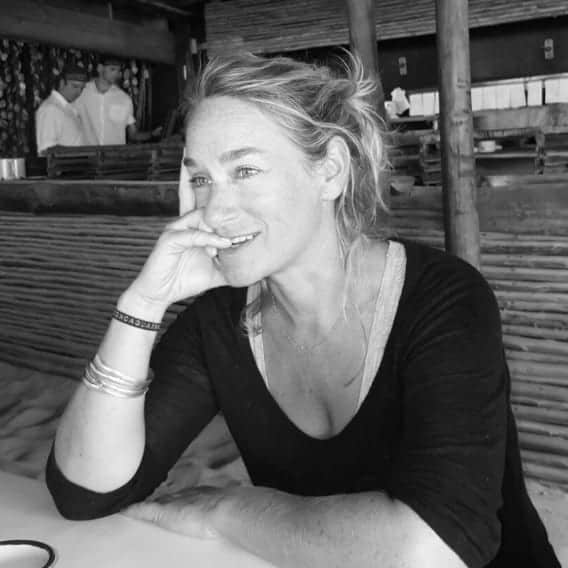
Jackie Stevenson, the founder of Spirit of Leadership, is a renowned expert in delivering engaging, innovative, and sustainable approaches for positive change. At Spirit of Leadership, Jackie combines the wisdom of horses, the power of nature, the principles of biomimicry, and innovative design to create transformative learning experiences for leadership development, team building, and personal discovery. Through Jackie’s expertise and the unique blend of experiential learning modalities, Spirit of Leadership offers a dynamic and impactful journey towards personal and professional growth. Jackie shares her insights with MysticMag.
Can you tell us more about how horses and nature are incorporated into the leadership development programs offered by Spirit of Leadership?
Horses have always been a significant part of my life. When I opened my coaching practice, my goal was to connect with everyone outdoors as much as possible. I strongly believe that the natural world provides a broader perspective, allowing us to feel grounded by our literal connection to the earth. This connection enables us to be more present as we navigate a world filled with magic, mystery, and beauty that extends far beyond the confines of our walls.
As people walked by our horse pasture, the horses would eagerly extend their heads to greet them. I noticed that important conversations were unfolding between people and horses during these encounters. This realization prompted me to bring my clients into the horse pasture. Surprisingly, it became apparent that we weren’t merely introducing horses to the human world; instead, we were immersing humans in the world of horses. It was an incredible opportunity to learn about leadership, teamwork, and sustainability.
Horses, as the oldest living mammals with a history spanning 65 million years, have thrived through collaboration. Working together is vital for the strength and well-being of the entire herd, emphasizing the importance of each team member’s contributions. This collective viewpoint offers valuable insights into leadership dynamics.
Another remarkable aspect of horses is their eternal optimism. They never dwell on the past or look back with regret. Instead, they are constantly seeking the next best place to be, a companion to bond with, greener grass, the shape of an open pasture, or even a cleansing rainstorm to refresh their coats. They always move towards what brings life and vitality.
Furthermore, horses exemplify the responsibility and attentiveness towards future generations. They safeguard the strength, viability, and adaptability of the next generation within the herd. These lessons of collaboration, positive progress, and future well-being apply not only to companies but also to future generations of children and the greater good of society.
This journey began with coaching individuals, but I soon realized that working with groups in the presence of horses accelerated the learning process. We began inviting teams, sometimes small leadership groups of three to five, other times larger groups of around fifteen managers. Being in a new environment outside their familiar settings allowed them to perceive themselves, each other, and their culture from a fresh perspective. It sparked awareness and intentionality, leading them to reflect on the culture they wanted to create within their own organizations.
Moreover, the serene and unhurried nature of the horse’s realm provided a space for deep listening. Teams could listen to their inner selves and to others, engaging in conversations about what truly mattered. The vast openness of the surroundings created an atmosphere conducive to embracing differences and resolving conflicts. It fostered a sense of possibility and harmony that might not have been achievable elsewhere.
How does the approach taken by Spirit of Leadership differ from traditional leadership training programs?
It’s all about building relationships, not focusing on specific activities. We’re not like a ropes course where the main goal is to challenge yourself or your team and overcome fears through adrenaline or fear-based experiences. Instead, our approach revolves around exploring relationships. Who are you? Who am I at my best? What truly matters to me? How do I want to engage with others? We start by considering how we enter a space.
With horses, we always stop and pause, asking for permission and communicating our intentions. How often do we barge into someone’s space without considering their needs or circumstances? Similarly, people stop at the gate, observe the horses, check in with their team or anyone who might need assistance. We enter with awareness, creating a respectful relationship from the very beginning.
Respect leads to trust, and from trust, positive relationships can flourish, even love in a broader sense. By establishing this dynamic with horses and with each other as a team, and even within ourselves, we learn to foster better and more respectful relationships with ourselves, our families, and the world. We also learn to identify what we trust in ourselves and what we find trustworthy. There’s no judgment or right or wrong in our programs; it’s all about gathering information, curiosity, and learning. Mistakes are seen as opportunities for growth and discovery.
When engaging with horses, we pay attention to the feedback they provide. If we move too quickly and it disrupts the connection, it’s valuable information for us to repair and adjust our approach. Each person’s lesson will be different because the interaction between them and the horse is unique. I can’t interpret what the horse is saying to you; that’s something only you can understand based on your experience. Our programs focus on discovery, relationships, curiosity, and lived experiences. It’s not about teaching in the traditional sense; it’s about personal growth and understanding.
Research shows that when we learn through experience, it has a lasting impact. Our brains process this learning in the limbic region, where we remember how to ride a bicycle, fall in love, or safely cross the street. It’s not just about making sense of things intellectually; it’s about engaging in the experience itself. Studies indicate that when we learn through experience, we retain 90% of the knowledge compared to only 30% when we rely solely on intellectual understanding.
Can you share any success stories or examples of individuals or organizations that have benefited from the programs at Spirit of Leadership?
Well, this was a program of our company called Rizal. We’re a large global company that creates products to ensure smooth engine and gear operations. It’s amusing because sometimes people can get in the way and complicate things, right? Our goal is to help engineers find their flow, just like our products facilitate smooth movement. But in this particular case, they approached us because there was a gentleman in their North American corporation, let’s call him Paul, who needed permission to attend our program. He was just a couple of years away from retirement and didn’t really want to come. The team consisted mostly of young individuals, creating a significant generational gap, and Paul’s absence would have made a noticeable difference. So, Paul called me and explained the situation, and I asked him what it would take for this gentleman, whom I’ll refer to as Big Jack, to participate. Paul admitted that Big Jack wasn’t willing to come voluntarily. I suggested a compromise: he could cross out the word “voluntarily” on the consent form and replace it with “involuntary.” Paul agreed to this arrangement, and that’s how Big Jack ended up joining the program.
During the team-building activity with the horses, the team had to work together to guide the horses in a coherent direction using only yarn string as makeshift halters. If the horses pulled too hard, the yarn would break, so they had to motivate the horses to willingly follow them. At first, all the horses were going in different directions, while Big Jack leaned against the fence with his arms crossed and his gray hair showing. Then, one of our older retired horses named Thunderheart walked over and stood next to Big Jack. To my surprise, Big Jack had his arm around Thunderheart’s neck. I approached them and asked Big Jack how his team was doing. He replied with disappointment, saying it didn’t look good. So, I gathered the team and asked if they would like a consultation from Big Jack, considering his experience. They agreed, and Big Jack willingly provided coaching. He said to Thunderheart, “Let’s show them how it’s done.” Without any halter or lead line, just the two of them, Big Jack and Thunderheart walked to the front of the line. The horses, against the original plan, started to follow them. It was an unexpected turn of events.
The workshop continued for another day, and Big Jack fully engaged with the team. He wore his cowboy hat and belt buckle, embodying the spirit of a cowboy. After about six weeks, I called Paul to check in on the progress. He shared that everything had changed within their group. When the younger members, the next generation, approached Paul with questions, he directed them to Big Jack. Big Jack had become like a wise mentor, or as Paul put it, their Yoda in the herd. He served an essential purpose, inspiring and listening to them, while they also listened to him. He found his role in his final year before retirement, and being part of our program had made a tremendous difference in his life. I was thrilled to hear that. I met with Big Jack annually, and during our last meeting, he shared his plans to move to the UK to oversee the European office. Paul confirmed that Big Jack had retired, but what was interesting was that Paul had originally planned a small room for Big Jack’s retirement celebration. However, the demand was overwhelming, and Paul had to change the venue twice because so many people wanted to attend. Big Jack had truly made a significant impact on their lives. Although we can’t say for sure if it would have happened anyway, we believe our ranch and the horses acted as catalysts, opening up the space for possibilities to unfold.
How do you ensure that the learning experiences and activities provided by Spirit of Leadership are applicable and relevant to real-world situations?
We emphasize natural movement in our approach. For instance, when interacting with horses, we don’t simply groom them with brushes. Instead, we focus on intentional touch, considering how our touch can impact their lives. We encourage people to reflect on their intentions and what they aim to communicate through their touch. It’s essential to be aware of how the horse responds—whether they move towards us or away from us. Engaging with the horse prompts self-reflection. We explore how this experience of connection with the horse can be applied to our relationships in our family life or work environment.
Another activity involves assigning each team a horse partner. We invite participants to be curious about the horse’s presence—how they stand in the world, how they move, and how they interact within the herd. Each team member introduces their horse partner and demonstrates the horse’s presence through their own body language. Then, we encourage the entire team to embody that way of being, to try it on for themselves. This exercise helps individuals practice different ways of being and engaging.
Let me tell you about some of the horses we work with. There’s a black and white horse from the UK who used to pull a gypsy caravan. He has a laid-back demeanor and is never in a hurry. Standing next to him is our lead mare, always alert and attentive, somewhat of a micro-manager. And then there’s Raven, a cool and confident horse with a swagger in his walk. Each horse has a distinct presence, and we ask participants to pay attention to their own presence as well.
Following these activities, we create learning opportunities through what we call wisdom gatherings. We gather everyone in a circle and invite them to share their insights and experiences. We ask them what they found interesting or learned during the activities. Participants often share observations about the horses or their accomplishments with the horses. We then guide them to reflect on the value of these lessons in their workplace. We encourage them to consider one small step they can take based on what they’ve learned and one bold step they could explore. The goal is to find a meaningful and valuable application of their newfound knowledge.
How does the incorporation of biomimicry and innovative design contribute to the leadership development process at Spirit of Leadership?
Biomimicry, a concept closely associated with the work of Benyus and her book on the subject, is actually an ancient practice rooted in indigenous wisdom. Native and indigenous communities have always learned from nature to address their human challenges. For example, they observed plants and their medicinal properties, leading to the development of herbal medicine. They also noticed certain branches or leaves that repelled water, which they used to build roofs for their homes. By studying nature, they discovered the best wood for constructing canoes based on its buoyancy.
Biomimicry is about reestablishing our partnership with nature and learning from its wisdom. It involves recognizing that we are part of the natural world, rather than being solely human-centric or attempting to control nature. Unfortunately, as we have become more disconnected from nature, we have overlooked the possibilities and solutions nature can offer us.
Biomimicry encourages us to partner with nature. For instance, engineers and scientists faced a problem with a high-speed train in the UK that produced a loud sonic boom when exiting tunnels, disturbing the urban environment. To address this issue, they brought in biologists familiar with biomimicry. Inspired by a bird that enters the water silently, they redesigned the train’s front to resemble the shape of the bird’s beak. This modification successfully eliminated the sonic boom. Similarly, windmill designs have been influenced by studying how wind moves and how a whale’s fins move through water. The propellers on windmills now mimic the fins’ design, optimizing efficiency.
Biomimicry goes beyond creating individual products. It focuses on understanding and improving systems, processes, and relationships. It teaches us the importance of teamwork, leadership, sustainability, collaboration, and cooperation instead of competition. It prompts us to seek sustainable and biodegradable products to ensure a healthy environment for future generations, preventing the accumulation of waste in our oceans for our children to deal with. Biomimicry encourages us to approach problem-solving holistically, considering the broader impact and long-term sustainability of our actions.
If you would like to find out more about Spirit of Leadership, visit https://www.spirit-of-leadership.com/



